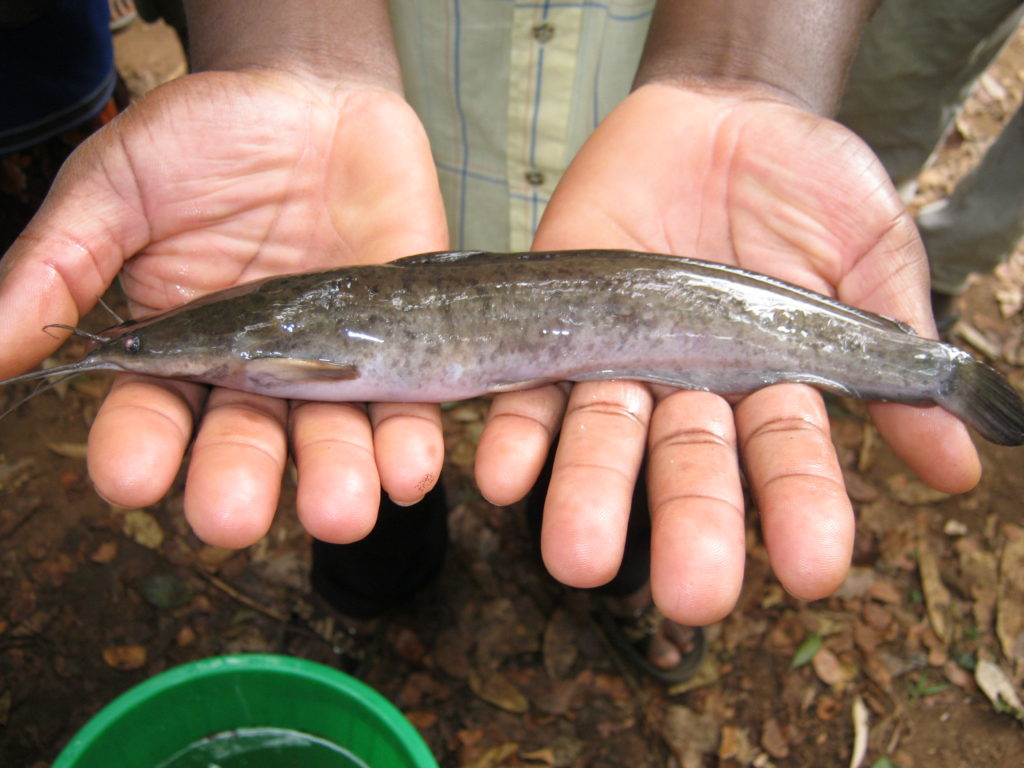 It was no ordinary fishing trip. In May 2011, Denis Tweddle, a research associate of the South African Institute for Aquatic Biodiversity (SAIAB), led an expedition to collect little-known fishes from the remote rivers of southern Malawi in Africa. As an International Barcode of Life postdoctoral fellow at SAIAB, I joined the expedition to collect genetic samples of the fishes for the ongoing effort to build a DNA barcoding database of all the freshwater fish species in southern Africa.
It was no ordinary fishing trip. In May 2011, Denis Tweddle, a research associate of the South African Institute for Aquatic Biodiversity (SAIAB), led an expedition to collect little-known fishes from the remote rivers of southern Malawi in Africa. As an International Barcode of Life postdoctoral fellow at SAIAB, I joined the expedition to collect genetic samples of the fishes for the ongoing effort to build a DNA barcoding database of all the freshwater fish species in southern Africa.
The SAIAB team was joined by local scientists Amulike Msukwa and Msekiwa Matsimbe, from the Bunda College of Agriculture in Lilongwe, who collected information on fish species distribution in the region. Carl Bruessow of the Mulanje Mountain Conservation Trust provided valuable assistance and local knowledge of Mulanje and its environs.
 Our team sampled fishes from the Shire, Bua and Ruo rivers and their tributaries, concentrating on the streams descending from the slopes of the massive Mount Mulanje. Some of the sampling locations were in difficult-to-reach rural areas and hadn’t been visited by researchers in decades. Some of the challenges of doing research in these areas included navigating on rural roads that had nearly vanished over time, figuring out how to charge the batteries for the electrofisher each night despite frequent power outages, and evading passing trains of army ants.
Our team sampled fishes from the Shire, Bua and Ruo rivers and their tributaries, concentrating on the streams descending from the slopes of the massive Mount Mulanje. Some of the sampling locations were in difficult-to-reach rural areas and hadn’t been visited by researchers in decades. Some of the challenges of doing research in these areas included navigating on rural roads that had nearly vanished over time, figuring out how to charge the batteries for the electrofisher each night despite frequent power outages, and evading passing trains of army ants.
We collected more than 300 individuals representing at least 32 separate fish taxa, as well as smaller numbers of frogs, crabs and aquatic insects.
 The specimens were brought to the SAIAB laboratory in Grahamstown, South Africa, to be stored as vouchers in South Africa’s National Fish Collection. Tissue samples from each individual were sent for DNA barcoding at the Canadian Centre for DNA Barcoding in Guelph, Ontario, and the results were uploaded to the global Barcode of Life Database. The morphological and genetic analysis of the specimens has revealed that the Mount Mulanje region harbors several putative new species, which are now in the process of being formally described.
The specimens were brought to the SAIAB laboratory in Grahamstown, South Africa, to be stored as vouchers in South Africa’s National Fish Collection. Tissue samples from each individual were sent for DNA barcoding at the Canadian Centre for DNA Barcoding in Guelph, Ontario, and the results were uploaded to the global Barcode of Life Database. The morphological and genetic analysis of the specimens has revealed that the Mount Mulanje region harbors several putative new species, which are now in the process of being formally described.
 The fish fauna of the upper Ruo River is of particular interest to researchers: it is separated from the Lower Zambezi ecoregion by an ancient waterfall, and is thought to harbor a number of relict species. Getting a complete picture of the region’s biodiversity is especially relevant now, as the aquatic ecosystems in the area are being heavily impacted by a growing human population and the associated changes in land use.
The fish fauna of the upper Ruo River is of particular interest to researchers: it is separated from the Lower Zambezi ecoregion by an ancient waterfall, and is thought to harbor a number of relict species. Getting a complete picture of the region’s biodiversity is especially relevant now, as the aquatic ecosystems in the area are being heavily impacted by a growing human population and the associated changes in land use.
(From 2010 until 2013, the author was a post-doctoral fellow at SAIAB in the project “Engaging Developing Nations In The International Barcode of Life”, funded by Canada’s International Development Research Centre, IDRC.)
Contact: http://www.saiab.ac.za/contact-us.htm



